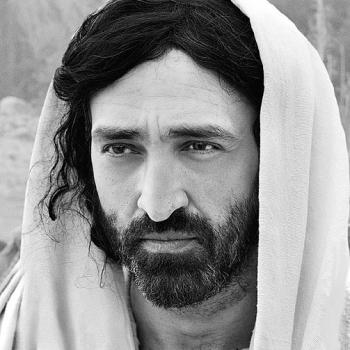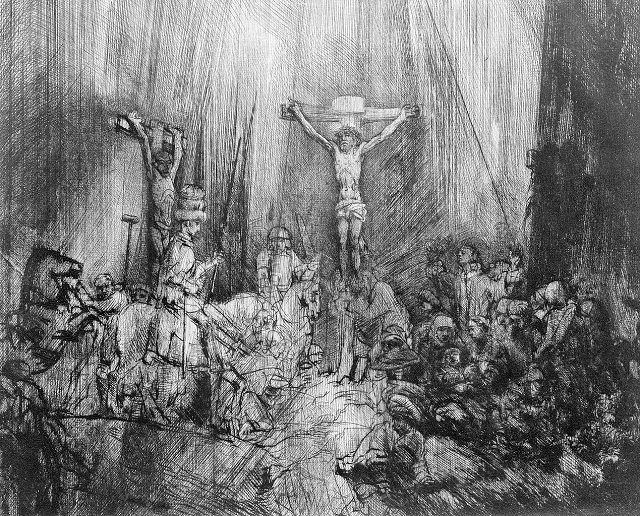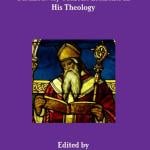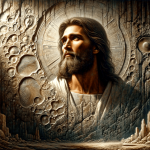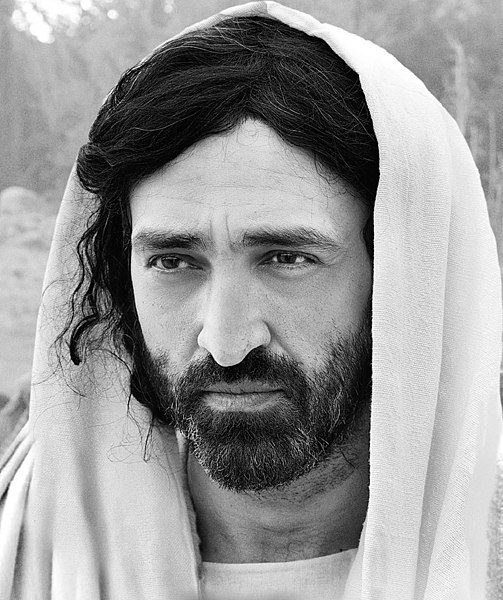
Michael J. Alter is the author of the copiously researched, 913-page volume,
Mike describes himself as “of the Jewish faith” but is quick to point out that labels are often “misleading” and “divisive” (I agree to a large extent). He continues to be influenced by, for example, “Reformed, Conservative, Orthodox, and Chabad” variants of Judaism and learns “from those of other faiths, the secular, the non-theists, etc.” Fair enough. I have a great many influences, too, am very ecumenical, and am a great admirer of Judaism, as I told Michael in a combox comment on my blog.
He says his book “can be described as Jewish apologetics” and one that provides reasons for “why members of the Jewish community should not convert to Christianity.” I will be writing many critiques of the book and we’ll be engaging in ongoing discussion for likely a long time. I’m quite excited about it and eagerly enjoy the dialogue and debate. This is a rare opportunity these days and I am most grateful for Mike’s willingness to interact, minus any personal hostility.
I use RSV for all Bible verses that I cite. His words will be in blue.
*****
Alter wrote: The Gospels do not record any historical words attributed to Jesus that demonstrated that he conceived of his death as a propitiatory sacrifice to save mankind from its sins! Why then did Jesus not once, during his ministry, either in private to his disciples, as recorded in the Gospels or as part of his public teaching, ever announce indisputably and unequivocally a divinely ordained scheme for the redemption of mankind? If the salvation of the world was at stake, as Christians proclaim, would it not have been reasonable, in plain and unequivocal terms, to have declared this plan to those whose benefit it was supposedly intended? (p. 77)
This is massively untrue. Here’s a friendly suggestion to Mr. Alter (from one apologist to another): you would do well to refrain from using universal negatives and sweeping statements (“do not record any“ / “not once . . .”). It leaves you open to being definitively and easily refuted. All your opponents have to do is produce a single counter-example, and your assertion is nullified. As it is, I will produce many NT passages that contradict your claim.
But first let’s do a survey of what the Hebrew Bible has to say about the salvation of men, and about God alone being the savior and that He alone can and does forgive sins, leading to salvation. This will establish that Jesus, by claiming to be the savior or redeemer (in many different ways, as seen below) was claiming to be equal to God at the same time. This comes out most clearly in John 10:27-30 and 12:44.
***
Exodus 34:6-7 The LORD passed before him, and proclaimed, “The LORD, the LORD, a God merciful and gracious, slow to anger, and abounding in steadfast love and faithfulness, [7] keeping steadfast love for thousands, forgiving iniquity and transgression and sin, . . .
Psalms 103:12 as far as the east is from the west, so far does he remove our transgressions from us.
Psalms 130:3-4 If thou, O LORD, shouldst mark iniquities, Lord, who could stand? [4] But there is forgiveness with thee, that thou mayest be feared.
Isaiah 43:3 For I am the LORD your God, the Holy One of Israel, your Savior.
Isaiah 43:11 I, I am the LORD, and besides me there is no savior.
Isaiah 43:25 I, I am He who blots out your transgressions for my own sake, and I will not remember your sins.
Isaiah 45:15, 17, 21 . . . O God of Israel, the Savior. . . . [17] But Israel is saved by the LORD with everlasting salvation; you shall not be put to shame or confounded to all eternity.. . . [21] . . . And there is no other god besides me, a righteous God and a Savior; there is none besides me.
Isaiah 49:26 . . . I am the LORD your Savior, and your Redeemer, the Mighty One of Jacob.
Isaiah 55:6-7 “Seek the LORD while he may be found, call upon him while he is near; [7] let the wicked forsake his way, and the unrighteous man his thoughts; let him return to the LORD, that he may have mercy on him, and to our God, for he will abundantly pardon.
Isaiah 60:16 . . . I, the LORD, am your Savior and your Redeemer, the Mighty One of Jacob.
Isaiah 63:8-9 For he said, Surely they are my people, sons who will not deal falsely; and he became their Savior. [9] In all their affliction he was afflicted, and the angel of his presence saved them; in his love and in his pity he redeemed them; . . .
Jeremiah 31:34 And no longer shall each man teach his neighbor and each his brother, saying, `Know the LORD,’ for they shall all know me, from the least of them to the greatest, says the LORD; for I will forgive their iniquity, and I will remember their sin no more.”
Jeremiah 33:8 I will cleanse them from all the guilt of their sin against me, and I will forgive all the guilt of their sin and rebellion against me.
Daniel 9:9 To the Lord our God belong mercy and forgiveness; because we have rebelled against him,
Hosea 13:4 I am the LORD your God from the land of Egypt; you know no God but me, and besides me there is no savior.
Micah 7:18-19 Who is a God like thee, pardoning iniquity and passing over transgression for the remnant of his inheritance? He does not retain his anger for ever because he delights in steadfast love. [19] He will again have compassion upon us, he will tread our iniquities under foot. Thou wilt cast all our sins into the depths of the sea.
***
Matthew 16:24-27 Then Jesus told his disciples, “If any man would come after me, let him deny himself and take up his cross and follow me. [25] For whoever would save his life will lose it, and whoever loses his life for my sake will find it. [26] For what will it profit a man, if he gains the whole world and forfeits his life? Or what shall a man give in return for his life? [27] For the Son of man is to come with his angels in the glory of his Father, and then he will repay every man for what he has done.
Matthew 19:16-29 And behold, one came up to him, saying, “Teacher, what good deed must I do, to have eternal life?” [17] And he said to him, “Why do you ask me about what is good? One there is who is good. If you would enter life, keep the commandments.” [18] He said to him, “Which?” And Jesus said, “You shall not kill, You shall not commit adultery, You shall not steal, You shall not bear false witness, [19] Honor your father and mother, and, You shall love your neighbor as yourself.” [20] The young man said to him, “All these I have observed; what do I still lack?” [21] Jesus said to him, “If you would be perfect, go, sell what you possess and give to the poor, and you will have treasure in heaven; and come, follow me.” [22] When the young man heard this he went away sorrowful; for he had great possessions.[23] And Jesus said to his disciples, “Truly, I say to you, it will be hard for a rich man to enter the kingdom of heaven. [24] Again I tell you, it is easier for a camel to go through the eye of a needle than for a rich man to enter the kingdom of God.” [25] When the disciples heard this they were greatly astonished, saying, “Who then can be saved?” [26] But Jesus looked at them and said to them, “With men this is impossible, but with God all things are possible.” [27] Then Peter said in reply, “Lo, we have left everything and followed you. What then shall we have?” [28] Jesus said to them, “Truly, I say to you, in the new world, when the Son of man shall sit on his glorious throne, you who have followed me will also sit on twelve thrones, judging the twelve tribes of Israel. [29] And every one who has left houses or brothers or sisters or father or mother or children or lands, for my name’s sake, will receive a hundredfold, and inherit eternal life.
Matthew 20:28 even as the Son of man came not to be served but to serve, and to give his life as a ransom for many.
Mark 8:34-35 And he called to him the multitude with his disciples, and said to them, “If any man would come after me, let him deny himself and take up his cross and follow me. [35] For whoever would save his life will lose it; and whoever loses his life for my sake and the gospel’s will save it.
Mark 10:29-30 Jesus said, “Truly, I say to you, there is no one who has left house or brothers or sisters or mother or father or children or lands, for my sake and for the gospel, [30] who will not receive a hundredfold now in this time, houses and brothers and sisters and mothers and children and lands, with persecutions, and in the age to come eternal life.
Mark 13:13 and you will be hated by all for my name’s sake. But he who endures to the end will be saved.
Luke 9:22-24 . . . “The Son of man must suffer many things, and be rejected by the elders and chief priests and scribes, and be killed, and on the third day be raised.” [23] And he said to all, “If any man would come after me, let him deny himself and take up his cross daily and follow me. [24] For whoever would save his life will lose it; and whoever loses his life for my sake, he will save it.
Luke 13:34 O Jerusalem, Jerusalem, killing the prophets and stoning those who are sent to you! How often would I have gathered your children together as a hen gathers her brood under her wings, and you would not!
Luke 19:9-10 And Jesus said to him, “Today salvation has come to this house, since he also is a son of Abraham. [10] For the Son of man came to seek and to save the lost.”
John 4:13-14 Jesus said to her, “Every one who drinks of this water will thirst again, [14] but whoever drinks of the water that I shall give him will never thirst; the water that I shall give him will become in him a spring of water welling up to eternal life.”
John 5:21, 24-26 For as the Father raises the dead and gives them life, so also the Son gives life to whom he will. . . . [24] Truly, truly, I say to you, he who hears my word and believes him who sent me, has eternal life; he does not come into judgment, but has passed from death to life. [25] “Truly, truly, I say to you, the hour is coming, and now is, when the dead will hear the voice of the Son of God, and those who hear will live. [26] For as the Father has life in himself, so he has granted the Son also to have life in himself,
John 5:33-40 You sent to John, and he has borne witness to the truth. [34] Not that the testimony which I receive is from man; but I say this that you may be saved. [35] He was a burning and shining lamp, and you were willing to rejoice for a while in his light. [36] But the testimony which I have is greater than that of John; for the works which the Father has granted me to accomplish, these very works which I am doing, bear me witness that the Father has sent me. [37] And the Father who sent me has himself borne witness to me. His voice you have never heard, his form you have never seen; [38] and you do not have his word abiding in you, for you do not believe him whom he has sent. [39] You search the scriptures, because you think that in them you have eternal life; and it is they that bear witness to me; [40] yet you refuse to come to me that you may have life.
John 6:27-29 Do not labor for the food which perishes, but for the food which endures to eternal life, which the Son of man will give to you; for on him has God the Father set his seal.” [28] Then they said to him, “What must we do, to be doing the works of God?” [29] Jesus answered them, “This is the work of God, that you believe in him whom he has sent.”
John 6:33-35 For the bread of God is that which comes down from heaven, and gives life to the world.” [34] They said to him, “Lord, give us this bread always.” [35] Jesus said to them, “I am the bread of life; he who comes to me shall not hunger, and he who believes in me shall never thirst.”
John 6:40 For this is the will of my Father, that every one who sees the Son and believes in him should have eternal life; and I will raise him up at the last day.”
John 6:44-58 No one can come to me unless the Father who sent me draws him; and I will raise him up at the last day. [45] It is written in the prophets, ‘And they shall all be taught by God.’ Every one who has heard and learned from the Father comes to me. [46] Not that any one has seen the Father except him who is from God; he has seen the Father. [47] Truly, truly, I say to you, he who believes has eternal life. [48] I am the bread of life. [49] Your fathers ate the manna in the wilderness, and they died. [50] This is the bread which comes down from heaven, that a man may eat of it and not die. [51] I am the living bread which came down from heaven; if any one eats of this bread, he will live for ever; and the bread which I shall give for the life of the world is my flesh.” [52] The Jews then disputed among themselves, saying, “How can this man give us his flesh to eat?” [53] So Jesus said to them, “Truly, truly, I say to you, unless you eat the flesh of the Son of man and drink his blood, you have no life in you; [54] he who eats my flesh and drinks my blood has eternal life, and I will raise him up at the last day. [55] For my flesh is food indeed, and my blood is drink indeed. [56] He who eats my flesh and drinks my blood abides in me, and I in him. [57] As the living Father sent me, and I live because of the Father, so he who eats me will live because of me. [58] This is the bread which came down from heaven, not such as the fathers ate and died; he who eats this bread will live for ever.”
John 8:12 Again Jesus spoke to them, saying, “I am the light of the world; he who follows me will not walk in darkness, but will have the light of life.”
John 8:24 I told you that you would die in your sins, for you will die in your sins unless you believe that I am he.
John 9:5 As long as I am in the world, I am the light of the world.
John 10:7-11 So Jesus again said to them, “Truly, truly, I say to you, I am the door of the sheep. [8] All who came before me are thieves and robbers; but the sheep did not heed them. [9] I am the door; if any one enters by me, he will be saved, and will go in and out and find pasture. [10] The thief comes only to steal and kill and destroy; I came that they may have life, and have it abundantly. [11] I am the good shepherd. The good shepherd lays down his life for the sheep.
John 10:14-18 I am the good shepherd; I know my own and my own know me, [15] as the Father knows me and I know the Father; and I lay down my life for the sheep. [16] And I have other sheep, that are not of this fold; I must bring them also, and they will heed my voice. So there shall be one flock, one shepherd. [17] For this reason the Father loves me, because I lay down my life, that I may take it again. [18] No one takes it from me, but I lay it down of my own accord. I have power to lay it down, and I have power to take it again; this charge I have received from my Father.”
John 10:27-30 “My sheep hear my voice, and I know them, and they follow me; [28] and I give them eternal life, and they shall never perish, and no one shall snatch them out of my hand. [29] My Father, who has given them to me, is greater than all, and no one is able to snatch them out of the Father’s hand. [30] I and the Father are one.”
John 11:25-26 Jesus said to her, “I am the resurrection and the life; he who believes in me, though he die, yet shall he live, [26] and whoever lives and believes in me shall never die. . . .
John 12:32-33 “. . . when I am lifted up from the earth, will draw all men to myself.” [33] He said this to show by what death he was to die.
John 12:35-36 Jesus said to them, “The light is with you for a little longer. Walk while you have the light, lest the darkness overtake you; he who walks in the darkness does not know where he goes. [36] While you have the light, believe in the light, that you may become sons of light.” . . .
John 12:44-48 And Jesus cried out and said, “He who believes in me, believes not in me but in him who sent me. [45] And he who sees me sees him who sent me. [46] I have come as light into the world, that whoever believes in me may not remain in darkness. [47] If any one hears my sayings and does not keep them, I do not judge him; for I did not come to judge the world but to save the world. [48] He who rejects me and does not receive my sayings has a judge; the word that I have spoken will be his judge on the last day.
John 14:6 Jesus said to him, “I am the way, and the truth, and the life; no one comes to the Father, but by me.
John 15:13 Greater love has no man than this, that a man lay down his life for his friends.
John 17:1-3 When Jesus had spoken these words, he lifted up his eyes to heaven and said, “Father, the hour has come; glorify thy Son that the Son may glorify thee, [2] since thou hast given him power over all flesh, to give eternal life to all whom thou hast given him. [3] And this is eternal life, that they know thee the only true God, and Jesus Christ whom thou hast sent.
There is also much information in the Gospels regarding the “kingdom of God / heaven” motif, which ties into salvation.
***
Photo credit: Selva Rasalingam as Jesus in the The Gospel of Luke (2016, Netflix USA) [Wikimedia Commons / Creative Commons CC0 1.0 Universal Public Domain Dedication]
Summary: Michael Alter remarkably claimed that “not once” did Jesus ever claim to be the savior of the world, or its redeemer, by means of His sacrificial death. I provide massive counter-Scripture.
Tags: alleged Bible contradictions, alleged Resurrection contradictions, Bible “contradictions”, Bible “difficulties”, Bible Only, biblical inspiration, biblical prooftexts, biblical skeptics, biblical theology, exegesis, hermeneutics, Holy Bible, inerrancy, infallibility, Jewish anti-Christian polemics, Jewish apologetics, Jewish critique of Christianity, Jewish-Christian discussion, Michael J. Alter, New Testament, New Testament critics, New Testament skepticism, Resurrection “Contradictions”, Resurrection of Jesus, The Resurrection: A Critical Inquiry, savior, saviour



